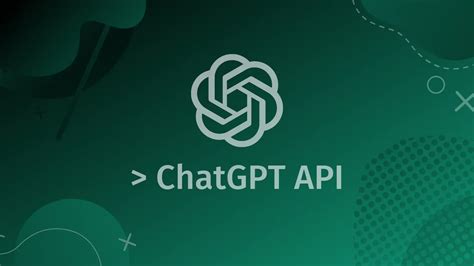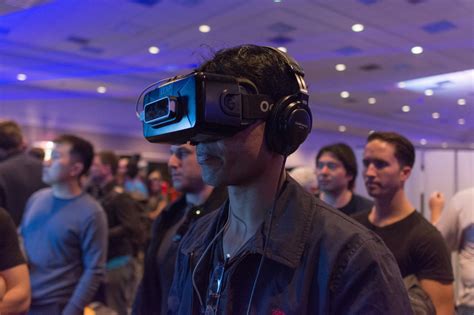Breaking News


Popular News


Discover how to create immersive experiences by incorporating VR technology and ChatGPT API. Learn to enhance user interactions and improve engagement.In today’s digital age, the combination of artificial intelligence and virtual reality has opened up new and exciting possibilities for creating immersive experiences. The ChatGPT API, a cutting-edge AI language model, has revolutionized the way we interact with technology, and when integrated with virtual reality (VR) technology, it can take user experiences to the next level. In this blog post, we will explore the potential of combining ChatGPT API with VR technology to design immersive virtual environments and enhance user interactions. We will delve into understanding the ChatGPT API, incorporating VR technology, designing immersive virtual environments, and improving user engagement and experience. Join us as we uncover the endless opportunities for creating captivating and immersive experiences through the fusion of ChatGPT API and VR technology.
Contents

ChatGPT API is an advanced language generation model that uses artificial intelligence to generate human-like responses to text input. It is designed to understand and respond to natural language queries, making it an ideal tool for enhancing user interactions in a variety of platforms, including virtual reality environments.
By integrating ChatGPT with VR platforms, developers can create immersive experiences that feel incredibly lifelike, allowing users to interact with virtual environments in a more natural and engaging way. This can lead to improved user engagement and experience, as well as opening up new possibilities for creating dynamic and interactive virtual worlds.
Using the ChatGPT API in VR environments opens up exciting new opportunities for designers and developers to create truly immersive experiences that blur the lines between reality and virtual worlds. With the ability to understand and respond to natural language, ChatGPT adds a new level of interactivity and realism to VR environments, making them feel more like natural extensions of the real world.

Virtual reality (VR) technology has revolutionized the way we experience digital content. By incorporating VR technology into various applications, we can create immersive and interactive experiences for users.
One of the key benefits of VR technology is its ability to transport users to virtual environments that feel incredibly realistic. Whether it’s exploring a foreign city, interacting with 3D models, or playing games, the use cases for VR are endless.
By leveraging VR technology, developers can design engaging experiences that captivate users and keep them coming back for more. The ability to interact with virtual environments in a natural and intuitive way adds a new dimension to user experiences.
With the integration of VR technology, businesses can offer unique and memorable experiences to their customers, which can ultimately lead to increased customer satisfaction and loyalty.

When it comes to enhancing user interactions with AI, there are numerous opportunities to create more personalized and engaging experiences. By leveraging the power of artificial intelligence, companies can better understand their users’ behaviors and preferences, and tailor their interactions accordingly. This can result in more relevant recommendations, more intuitive user interfaces, and ultimately, happier users.
One way AI can enhance user interactions is through natural language processing. By integrating chatbots or virtual assistants powered by AI, companies can provide users with a more conversational and human-like experience. This can be especially beneficial in customer service scenarios, where users may have complex questions or issues that need to be addressed in a timely and efficient manner. Through AI-powered interactions, users can feel more understood and supported, leading to higher satisfaction levels.
Another way to enhance user interactions with AI is through personalized recommendations and content. By analyzing user data and behavior patterns, AI algorithms can provide users with content, products, and services that are tailored to their specific interests and needs. This can create a more engaging and enjoyable experience for users, as they are more likely to encounter content that resonates with them on a personal level.
| Benefits of AI in user interactions | Challenges of AI implementation |
|---|---|
|
|
In conclusion, the integration of AI into user interactions holds great potential for creating more personalized, intuitive, and engaging experiences for users. By leveraging AI technologies such as natural language processing and personalized recommendations, companies can better understand and support their users, leading to higher levels of satisfaction and loyalty.

Designing immersive virtual environments is an exciting task that involves creating realistic and engaging spaces for users to explore in virtual reality. Whether it’s for gaming, education, or virtual tourism, the goal is to make users feel fully immersed in the virtual world.
One approach to achieving this is by incorporating VR technology that allows for realistic 3D environments and seamless interactions. This can involve the use of headsets, motion controllers, and other VR accessories to create a sense of presence and immersion for the user.
Another key aspect of designing immersive virtual environments is the use of AI to enhance user interactions. By leveraging AI technology, developers can create lifelike characters, responsive environments, and personalized experiences that adapt to the user’s actions and preferences.
Furthermore, utilizing tools such as ChatGPT API can enable real-time natural language processing within the virtual environment, allowing for more dynamic and engaging interactions for the user. By integrating ChatGPT with VR platforms, developers can create virtual environments where users can have conversations with virtual characters or receive personalized assistance and guidance.

Integrating ChatGPT with VR platforms can lead to the creation of truly immersive and interactive experiences for users. By combining the power of AI-generated text with the immersive nature of virtual reality, developers can create environments where users can engage in conversations with AI-powered virtual characters in real-time.
This integration opens up a world of possibilities for enhancing user interactions in virtual environments. Users can have meaningful and dynamic conversations with AI characters, leading to a more engaging and personalized experience. This can be especially impactful in areas such as virtual training, education, and entertainment.
Furthermore, the integration of ChatGPT with VR platforms can improve user engagement by providing a more natural and conversational interface. Instead of relying on pre-scripted dialogue options, users can engage in conversations that feel more organic and responsive, enhancing the overall user experience. This can also help in creating more realistic and believable virtual environments.
Overall, the integration of ChatGPT with VR platforms has the potential to revolutionize the way users interact and engage with virtual environments. As technology continues to advance, this integration can lead to the creation of more realistic and immersive experiences that blur the lines between the virtual and physical worlds.

Improving user engagement and experience is essential in the field of virtual reality. With the advancements in technology, it is important to incorporate AI and VR together to create immersive and interactive virtual environments. By leveraging the ChatGPT API, developers can enhance user interactions and experiences within these virtual worlds.
One way to achieve this is by using the ChatGPT API to create intelligent and responsive virtual companions. These companions can engage with users, provide information, and even simulate real conversations. By integrating AI chatbots into the VR experience, users can have more personalized and interactive interactions, ultimately leading to improved engagement.
Furthermore, the use of ChatGPT API can also help in designing immersive virtual environments. Developers can use the AI capabilities to generate dynamic and responsive environments that adapt to user interactions. This level of interactivity can significantly enhance the overall user experience and keep them engaged for longer periods of time.
Overall, integrating ChatGPT API with VR platforms has the potential to revolutionize user engagement and experience in virtual reality. By leveraging the power of AI, developers can create more interactive, personalized, and immersive virtual environments, leading to a more engaging and captivating experience for users.

What is ChatGPT API?
ChatGPT API is an AI-powered language model developed by OpenAI that can generate human-like text responses to user input.
How can ChatGPT API be used in virtual reality?
ChatGPT API can be used in virtual reality to create immersive experiences by providing realistic and interactive virtual characters that can engage in conversations with users.
What are the benefits of using ChatGPT API in virtual reality?
Using ChatGPT API in virtual reality can enhance the overall user experience by adding a layer of interactivity and realism to virtual environments, making them more engaging and immersive.
Can ChatGPT API understand and respond to user input in real-time?
Yes, ChatGPT API is capable of understanding and responding to user input in real-time, allowing for dynamic and responsive interactions with virtual characters in a virtual reality environment.
Are there any limitations to using ChatGPT API in virtual reality?
One potential limitation is the need for a stable internet connection to access the ChatGPT API, which may pose a challenge in certain virtual reality setups.
What are some potential applications of ChatGPT API in virtual reality?
Some potential applications include virtual training simulations with interactive virtual mentors, immersive storytelling experiences with dynamic virtual characters, and virtual customer service interactions.
How can developers integrate ChatGPT API into virtual reality applications?
Developers can integrate ChatGPT API into virtual reality applications using the relevant API endpoints and SDKs provided by OpenAI, allowing for seamless integration of AI-powered virtual characters into virtual reality environments.